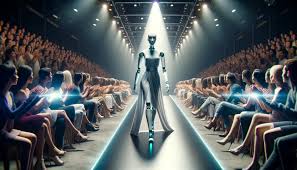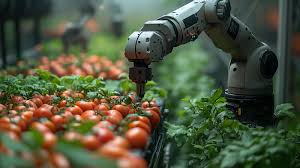As technology evolves, one of the most intriguing and controversial discussions has been about the role artificial intelligence (AI) plays in creative domains. From visual arts to literature, AI is making its mark, challenging traditional views on creativity and artistry. The question arises: can machines be considered artists, or is creativity inherently human? In this article, we’ll explore the relationship between AI and creativity, focusing on how AI is transforming music, art, writing, and more.
With the rapid advancements in AI, its ability to generate creative content has grown remarkably. But does this make AI a true artist? Can it produce work that evokes emotion, tells stories, or demonstrates personal insight the way a human artist might? Let’s take a closer look at how AI is pushing boundaries in the creative world.
The Role of AI in Music Creation: A New Era for Composers
AI’s influence on the world of music has been one of the most significant developments in recent years. AI music software can now generate entire compositions in various genres, ranging from classical symphonies to contemporary pop hits. While this innovation has opened doors for new possibilities in music creation, it also raises questions about the authenticity of AI-generated pieces.
AI music tools, such as OpenAI’s MuseNet and Jukedeck, use deep learning algorithms to analyze large datasets of existing music and then create original pieces based on the patterns they’ve learned. This ability to compose has sparked debates about whether AI can truly compose music that resonates emotionally with listeners, or if it’s simply mimicking human creativity without understanding the deeper emotional or cultural context.
Critics argue that while AI music may be technically impressive, it lacks the soul and personal touch that a human composer can bring to a piece. However, proponents of AI in music argue that the technology serves as a tool, enhancing the creative process and giving artists new ways to express themselves. For example, musicians can use AI to generate ideas, experiment with new sounds, or break free from creative blocks.
AI in Visual Arts: Redefining Artistic Boundaries
The world of visual art has also seen the rise of AI, with machines now capable of generating paintings, sculptures, and digital artworks. AI-generated art challenges the traditional understanding of what it means to be an artist. If an algorithm can create a masterpiece, does that diminish the role of human creativity, or does it add to the artistic landscape?
AI-generated artwork, such as the portraits created by DeepDream or the algorithmic paintings produced by art-focused AI platforms like Artbreeder, has sparked a revolution in the art world. These pieces blur the line between human-made and machine-made, leading to discussions about authorship and originality in the context of AI.
While some view AI-generated art as innovative and exciting, others remain skeptical, arguing that machines cannot possess the intuitive, emotional depth that human artists bring to their work. AI art often relies on pre-existing styles or patterns, raising the question: is it truly original, or is it simply the product of mimicking other works?
Despite these criticisms, AI-generated art has found a place in galleries, with some pieces even selling for substantial amounts of money. This suggests that, while AI may not be an artist in the traditional sense, it is still able to create art that is valued and appreciated by the public.
AI and Writing: Can a Machine Craft Meaningful Stories?
Writing has long been considered one of the most human forms of artistic expression, as it requires not only technical skill but also emotional intelligence and storytelling ability. However, AI-driven writing tools, such as GPT-3, have made significant strides in generating articles, poems, and even novels that are almost indistinguishable from human-created texts.
While AI’s ability to produce grammatically correct and coherent writing is impressive, the question remains: can machines truly understand the human experience enough to craft meaningful stories? AI can analyze vast amounts of text and replicate common structures and styles, but it lacks the ability to experience life and emotions firsthand, which many argue is essential for producing truly impactful literature.
Nonetheless, AI in writing is being used as a tool to assist human writers. It can generate ideas, provide inspiration, or even draft initial versions of texts, allowing writers to focus on refining their work. In this context, AI becomes a collaborative partner rather than an autonomous creator, showing that creativity can still be a blend of human and machine input.
AI and Creativity in Film: A New Frontier for Filmmakers
The influence of AI in film production is also growing, from scriptwriting to special effects and even acting. AI tools are being used to streamline the production process, automate editing, and create realistic visual effects that were once only possible with human ingenuity and advanced technology. In some cases, AI has even been used to generate entire short films, showcasing its ability to tell stories through visual media.
Despite these advancements, many filmmakers and critics argue that AI cannot fully replace the human touch in filmmaking. The ability to create compelling characters, evoke emotion through cinematography, and craft intricate plots requires a deep understanding of human behavior and culture, which AI has not yet mastered.
However, AI’s role in filmmaking is undeniable, and it is expected to continue evolving, offering filmmakers innovative tools to enhance their creativity. Whether it’s through generating complex visual effects, assisting in scriptwriting, or providing new ways to visualize stories, AI is undoubtedly shaping the future of film.
AI in Fashion Design: Can Machines Create Trendsetting Styles?

Fashion design has always been considered a highly creative field, where innovation and originality are highly valued. However, AI is beginning to play a significant role in the world of fashion, from designing clothing and accessories to predicting trends.
AI-powered tools like FashionAI are able to analyze current trends and consumer preferences, then generate designs that align with these patterns. Some AI systems are even capable of creating entirely new and innovative designs that might not have been considered by human designers.
While AI-generated fashion may lack the personal touch and cultural insight of human designers, it is clear that the technology can be a powerful tool in the fashion industry. It allows designers to experiment with new ideas and streamline the design process, leading to fresh and innovative creations.
The Ethical Implications of AI in Creativity
As AI continues to grow in its creative capabilities, there are ethical concerns that need to be addressed. One of the biggest issues is the question of authorship. If a machine creates a piece of art, who owns the rights to it? Should the creator of the AI algorithm be credited, or should the machine itself be recognized as the author?
Another ethical concern is the potential for AI to replace human jobs in creative industries. If AI can generate music, art, and literature, what does this mean for artists, writers, and musicians who rely on their creativity for their livelihoods?
Finally, there is the issue of bias in AI. Since AI systems are trained on data created by humans, they can sometimes perpetuate harmful stereotypes or reinforce existing biases. This is especially problematic in creative fields where diversity and representation are essential.
Conclusion: Can Machines Be Artists?
AI is undoubtedly changing the landscape of creativity, offering new possibilities for innovation and expression. While machines can generate music, art, and literature, whether they can truly be considered artists is still up for debate. AI lacks the lived experience, emotions, and cultural context that human artists bring to their work, making it unlikely that machines will ever fully replace human creativity.
However, AI can serve as a powerful tool for artists, enhancing their creative process and helping them explore new ideas. Rather than replacing human artists, AI may be better seen as a collaborative partner that can push the boundaries of what is possible in the creative world.
As technology continues to evolve, the relationship between AI and creativity will likely continue to evolve as well, opening up exciting new possibilities for artistic expression in the future.
